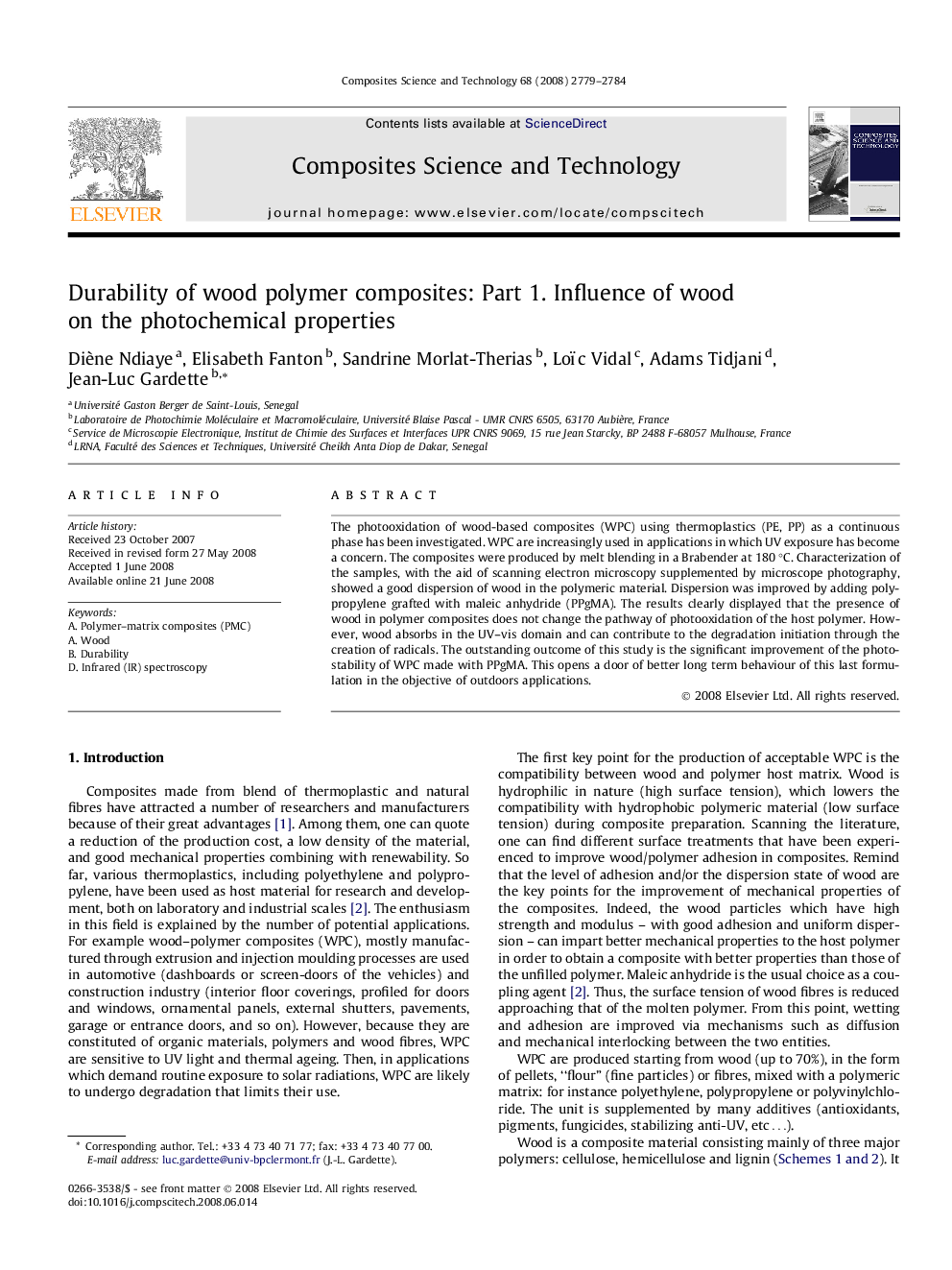| Article ID | Journal | Published Year | Pages | File Type |
|---|---|---|---|---|
| 822328 | Composites Science and Technology | 2008 | 6 Pages |
The photooxidation of wood-based composites (WPC) using thermoplastics (PE, PP) as a continuous phase has been investigated. WPC are increasingly used in applications in which UV exposure has become a concern. The composites were produced by melt blending in a Brabender at 180 °C. Characterization of the samples, with the aid of scanning electron microscopy supplemented by microscope photography, showed a good dispersion of wood in the polymeric material. Dispersion was improved by adding polypropylene grafted with maleic anhydride (PPgMA). The results clearly displayed that the presence of wood in polymer composites does not change the pathway of photooxidation of the host polymer. However, wood absorbs in the UV–vis domain and can contribute to the degradation initiation through the creation of radicals. The outstanding outcome of this study is the significant improvement of the photostability of WPC made with PPgMA. This opens a door of better long term behaviour of this last formulation in the objective of outdoors applications.
